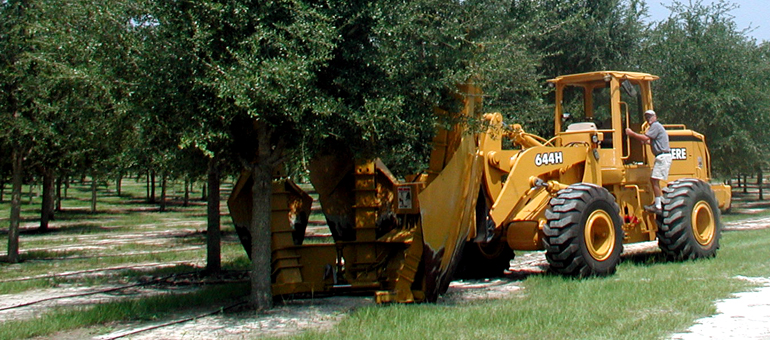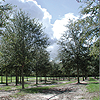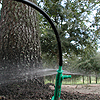
Mature trees can provide increased property value, character, beauty and welcoming shade. These are a few reasons why communities often use large shade trees like live oaks in landscapes, around parking lots, along roads, in housing developments and in many other public places. Large trees also provide many other great benefits.
Have you ever noticed the gracefulness of trees on a mild summer afternoon? Trees add a wonderful sense of character and beauty to any setting. Imagine being outside on a gorgeous spring day with the sky so blue, clouds so white, trees so green and flowers so colorful, it truly makes us feel peaceful. That sense of tranquility and serenity puts us at ease and we can begin enjoying the beauty around us.
Large trees in a community setting have many benefits. One benefit is that larger trees provide a noise barrier, making communities a little bit quieter. Some large trees have an architectural function such as emphasizing a certain view of a building. Since most large trees live for a very long time, you should carefully plan where you are going to plant the tree. Tree roots can damage sidewalks and roads if placed with insufficient room to grow.
Did You Know?
Trees can help control the temperature around them by blocking the effects of direct sunlight, wind and rain. Sunlight is either absorbed or deflected by trees as light gets filtered by the branches, producing shade underneath the tree. Trees that are large and have compact branches and leaves help break up wind speed.
Rainfall is caught and re-directed by trees producing some shelter from rain for people, animals and buildings. Trees help keep cities from flooding by absorbing water runoff. Trees can also help improve the air by removing dust particles. The leaves of trees absorb carbon-dioxide (CO2) and release oxygen (O2). Trees also take in other pollutants like: ozone, carbon monoxide and sulfur dioxide.
Did you know?
Trees can benefit the economy both directly and in-directly. For example, saving electricity would be a direct benefit. It has been proven that a house surrounded by trees that produce shade have lower electric bills than houses that are in direct sunlight. Heating costs can be reduced when a group of trees produce a windbreaker effect. Another direct economic benefit of trees is they increase property values.
An indirect economic benefit example is when customers pay lower electricity bills as a result of a power company's ability to use less water in their cooling towers, build fewer new facilities to meet peak demands and use reduced amounts of fossil fuel in their furnaces. Often communities can save thousands of dollars by planting large trees to control storm water instead of building facilities to control the storm water.
Often communities can save thousands of dollars by planting large trees to control storm water instead of building facilities to control the storm water.
Did You Know?
References:
We also source other varieties of large field grown trees for our customers such as Magnolias, Red Oaks, Cedars, Crape Myrtles, Bald Cypress, Elms, Ligustrum, Podocarpus, Holly and more.

We're setting higher standards in quality and value more

Why we offer the highest quality live oak trees more

Grades & Standards (Download)
Tree quality at planting has a large impact on longevity more